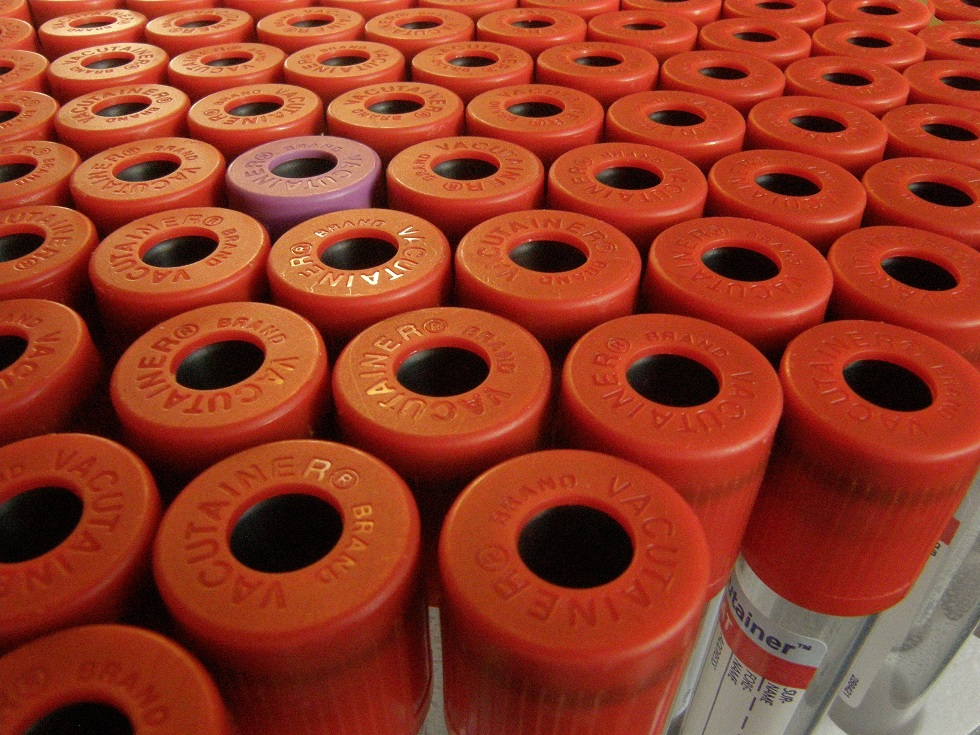Species: Canine and feline
Specimen: Serum
Container: Red top or gel (serum separator) tube
Collection protocol:
DOGS
1. Collect a resting serum sample (red top tube) at zero hours and label it “0 hour”.
2. Allow tube to clot. If possible separate the serum from the red cells by centrifugation. If a plain tube has been used for the assay, centrifuge and transfer the serum from the collection tube into a plain (red top tube). Do not syringe into tube. Store at 4°C.
3. Inject dexamethasone sodium phosphate intravenously at a dose rate of 0.1 mg/kg of body weight.
4. Collect a serum samples at 4 hours post injection, label as “4hr” and follow separation instructions as above.
5. Collect a serum samples at 8 hours post injection, label as “8hr” and follow separation instructions as above.
CATS
Two different protocols are described, one carried out in the clinic and one carried out at home by the owners.
In clinic protocol:
The dose used is 10x that used in the low dose dexamethasone test, i.e. 1.0mg/kg bodyweight. The test is carried out as above with a baseline sample and samples obtained at 4 and 8 hours.
Suppression is defined as a cortisol at either 4 or 8 hours that is < 50% of the baseline cortisol or a cortisol concentration at 4 or 8 hours that is < 40 nmol/L.
Cats with adrenal tumours do not suppress. Some cats with pituitary tumours may not suppress. Often if cats do not suppress with the low dose they will still not suppress with the high dose so this test is not favoured by some endocrinologists.
At home protocol:
This uses the combined urinary cortisol to creatinine ratio – dexamethasone suppression test. It has the advantage of being carried out at home (in a stress-free environment) but requires collection of three morning urine samples. As with all endocrine tests this test is not definitive and needs to be interpreted together with the clinical signs. The owner collects 2 consecutive morning urine samples. After collection of the second urine sample the owner then administers three oral doses of 0.1 mg/kg/dose of dexamethasone at 8 hourly intervals i.e. 8.00 am, 4 pm and midnight. On the third morning a final urine sample is obtained and all three urine samples are brought to the clinic.
The first 2 morning samples are used as a screening sample for Cushing’s and provide a basal sample. The third sample is used as a discriminatory test between pituitary adenoma and adrenal tumours. Suppression is described as a ratio that is < 50% of the baseline.
Cats that suppress have pituitary adenoma; cats that do not suppress may have either pituitary adenoma or an adrenal tumour.
DIABETC PATIENTS
Diabetic dogs – give half the regular morning dose of insulin and monitor blood glucose every 1 to 2 hours throughout the procedure.
Special handling/shipping requirements: Send all samples to the laboratory within 12-24 hours of collection.
General information about the disease: See “Diagnosis and monitoring of hyperadrenocorticism – general guidelines”
General information about when this test is indicated: Differentiation between pituitary or adrenal dependant hyperadrenocorticism.
Comparison with other related tests: See “Diagnosis and monitoring of hyperadrenocorticism – general guidelines”

